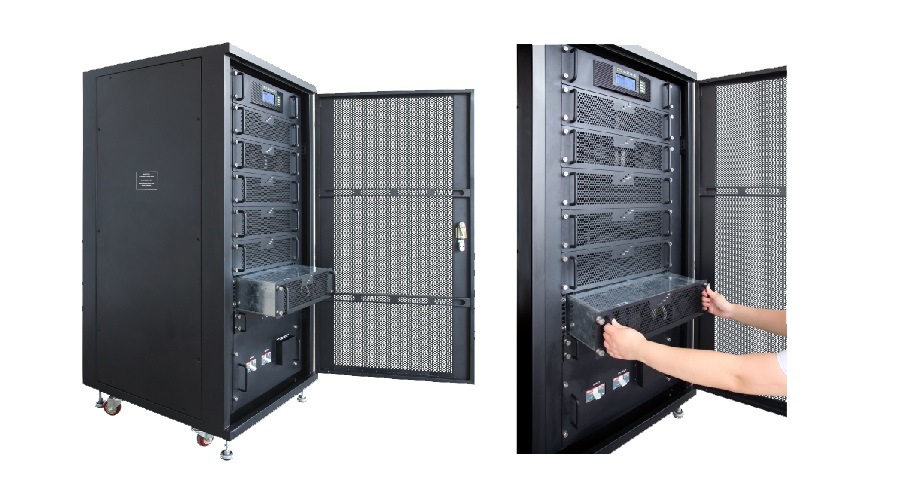ADVANTAGES OF MODULAR UPS DESIGN
Why Ups Systems Are Critical For The Safety Of Patients And Equipment
January 11, 2021
Picture of Modular UPS
A SUDDEN LOSS OF POWER IN A DATA CENTRE OR ANY CRITICAL ENVIRONMENT CAN BE DISASTROUS.
THAT’S WHY A RELIABLE AND EFFICIENT UNINTERRUPTIBLE POWER SUPPLY (UPS) IS A MAINSTAY OF ANY BACKUP OR POWER PROTECTION POLICY.
BUT WHAT IF THE UPS FAILS? WHAT HAPPENS TO THE CRITICAL LOAD IT IS THERE TO PROTECT?
The most comprehensive way to increase the reliability of the UPS and the availability of power is best achieved by considering two things. Removing single points of failure and adding redundancy. With modular UPS design, the critical load is shared over a series of modules, so the UPS is not reliant on any one module to ensure continuous availability. Modular UPS systems are usually chassis-based. This means that as your IT load grows power and battery can easily be added to increase capacity and run time or to add redundancy. In most cases, extra modules can be installed in just a few minutes and can even be fitted by the facilities, IT, or Data Centre support staff, reducing engineering costs and implementation time.
Unlike traditional standalone UPS, the connected load of a modular UPS will remain unaffected by a major fault. If a power module fails, the redundant module takes over and you simply replace the faulty module without downtime or a loss of UPS back up. If a battery module fails the only consequence is a slight reduction in the backup time available until the faulty module is replaced with a new one. The resilience of the modular design removes the potential for a single point of failure that you have with a traditional standalone UPS and provides the highest level of reliability and availability. It is also true that some traditional standalone UPS can be configured in parallel to provide the same N+1 redundancy that you get from a modular system. But even when compared with this option there are still some advantages to a modular UPS.
Standalone UPS are usually a fixed capacity. This means the potential capacity of the UPS has to be decided upon from day 1 to ensure it can always provide enough power as your IT load grows. Modular UPS can be scaled up as your IT load grows. You only add more power when you need it, which allows you to right-size the UPS for the load, this improves efficiency and lowers utility costs. Parallel systems often have a much larger footprint than modular UPS, so on a site where there are space constraints, it is not always a viable option to go down the parallel path. Even in locations where there is space available the larger footprint takes up valuable real estate space that could be utilized for other plants or equipment.
A modular system can cost more than a traditional standalone or parallel UPS in terms of initial capital cost. But this will be offset by the modular system’s reduced operating costs, especially when factors such as infrastructure costs, spares, and maintenance are taken into account. In addition to reduced operating costs, the modular approach offers a smaller footprint, greater flexibility, easier manageability, greater availability, and scalability throughout its operational life.
